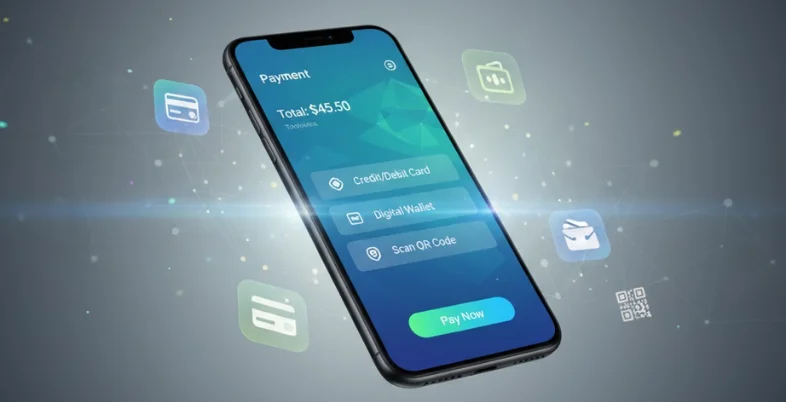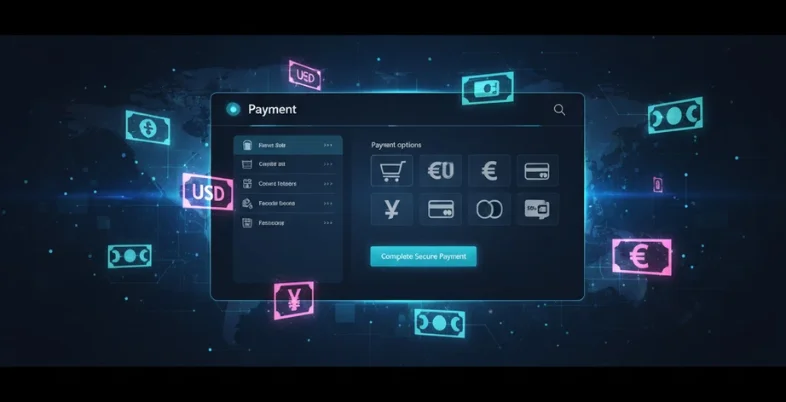Over 81 percent of travel reservations never achieve finalization, signifying substantial revenue loss that intelligent payment enhancement directly resolves. Only 10 percent of website guests access the reservation system, and merely 2 percent convert, rendering every enhancement to the payment sequence vital to reduce booking drop-off and secure revenue that presently escapes. The establishments that convert at elevated proportions have methodically removed friction elements that trigger hesitation during the concluding phases.
Optimize for Mobile-First Payment Experience

Mobile bookings dominate travel commerce, yet many booking engines still prioritize desktop experiences. Mobile checkout pages need to load in under three seconds since each tenth of a second delay measurably decreases conversion. Form fields must accommodate smaller screens without requiring horizontal scrolling or excessive zooming. Thumb-friendly button placement, appropriately sized tap targets, and streamlined forms that minimize typing all reduce mobile abandonment rates that consistently run higher than desktop.
Mobile optimization extends beyond responsive design into payment-specific considerations. Credit card number fields should trigger numeric keyboards automatically. Autofill functionality must work seamlessly across browsers and devices. Multi-step checkout processes that work acceptably on desktop become abandonment triggers on mobile when users must navigate between multiple screens while maintaining context about their booking details and total costs.
Choose Omnichannel Payment Infrastructure
Modern travelers expect seamless experiences whether booking through property websites, mobile apps, phone calls, or paying at check-in. Fragmented payment systems that don’t communicate across channels create problems where online bookings require re-entering payment information at the property or mobile app reservations cannot apply loyalty credits.
Selecting payment solutions that work consistently across web, app, and on-property point-of-sale terminals eliminates these friction points that damage guest experience and create operational inefficiencies.
Omnichannel payment infrastructure also enables staff to complete transactions when guests encounter problems during online checkout. A unified system lets front desk staff access incomplete bookings and process payment over the phone without requiring guests to restart the booking process. This recovery capability captures revenue that would otherwise be abandoned when technical issues or user errors interrupt online completion.
Enable One-Tap Digital Wallet Integration
Digital wallets like Apple Pay, Google Pay, and PayPal eliminate the tedious form-filling that drives abandonment. 64 percent of customers used digital wallets, making their absence from checkout flows a competitive disadvantage. These services store payment information, billing addresses, and contact details, collapsing multi-step checkout into single-tap completion.
The conversion advantage comes from removing decision fatigue and data entry friction. Travelers who have just spent time comparing room options, dates, and prices face a cognitive load that makes form-filling feel burdensome. One-tap payments capitalize on decision momentum before second thoughts creep in.
For tour operators aiming to run a successful bus tour business, integrating digital wallets like Apple Pay or Google Pay isn’t just about convenience — it’s a proven strategy to reduce booking drop-off and deliver a seamless customer experience that builds trust and repeat business.
Properties that added wallet options typically see conversion rate increases between 10 and 20 percent from mobile users, with the effect amplifying for younger demographics who have fully adopted these payment methods.
Streamline Strong Customer Authentication
European regulations require Strong Customer Authentication for online payments, adding verification steps that can interrupt the booking flow. The challenge is implementing SCA compliance without creating abandonment-inducing friction. Biometric authentication through fingerprint or face recognition provides security while feeling seamless to users. SMS codes work but introduce delays and frustration when codes arrive slowly or users switch between devices.
The most effective implementations incorporate authentication early in the booking process rather than surprising users at the final payment step. Requesting authentication when users create accounts or save payment methods spreads verification across the journey instead of concentrating friction at the conversion moment. Some payment processors also support authentication exemptions for low-risk transactions, reducing unnecessary verification when fraud indicators remain absent.
Display Total Costs Transparently Throughout
A 2024 study found that 22 percent of respondents cited a “too long/complicated checkout process” as a key reason for abandonment, with hidden fees ranking as a primary complication.
Showing room rates separately from taxes, resort fees, and other charges creates sticker shock at checkout that kills conversions. Transparent pricing from search results through booking confirmation builds trust and eliminates the primary reason travelers abandon at the payment step.
Properties that display full nightly rates including all fees in search results initially worry about appearing more expensive than competitors hiding fees until checkout. The data proved otherwise since transparent pricing attracted buyers ready to complete transactions rather than browsers still price-shopping. Cart abandonment emails trying to win back guests who discovered surprise fees rarely succeed since the trust breach already occurred.
Support Multi-Currency Display and Payment

International travelers converting between currencies introduce hesitation into booking decisions when prices are displayed only in local currency. Allowing guests to view and pay in their home currency eliminates mental math and foreign transaction fee concerns that cause abandonment. Multi-currency support matters particularly for properties in tourist destinations where international bookings represent significant revenue shares.
The implementation must go beyond simple currency conversion at checkout. Search results, room details, and all prices displayed should reflect the user’s selected currency to maintain consistency throughout the journey. Real-time exchange rate updates prevent discrepancies between displayed prices and final charges. Partnerships with payment processors that offer favorable exchange rates create additional competitive advantages over booking platforms that add currency conversion markups.
Implement Flexible Deposit and Payment Options
Requiring full payment upfront creates unnecessary barriers for travelers booking months in advance or making expensive reservations. Deposit options that secure bookings with partial payment reduce immediate financial commitment while still capturing the reservation. Many properties now offer “book now, pay later” integrations that let travelers split payments over time.
The deposit structure should clearly communicate when full payment becomes due and what cancellation policies apply. Ambiguity around payment schedules and refund terms drives abandonment as travelers hesitate when terms feel unclear. Automated payment reminders sent before final payment deadlines reduce involuntary cancellations where guests forget about upcoming charges and face unexpected declines or overdrafts.
Reduce Form Fields to Absolute Minimum
Every form field represents a decision point where users can question whether completing the booking is worth the effort. Analyze which information you genuinely need at booking versus what can be collected later. Name, email, payment information, and dates are essential. Phone numbers, special requests, arrival times, and detailed billing addresses can often wait until pre-arrival communications without preventing the booking from proceeding.
Guest account creation during checkout is particularly problematic since requiring password creation and profile setup adds steps that feel unrelated to the immediate booking goal. Offering guest checkout lets travelers complete transactions quickly, with account creation offered afterward as an optional convenience. Properties worried about losing customer data can prompt account creation post-booking through confirmation emails that incentivize profile completion with loyalty points or exclusive offers.
Deploy Analytics to Identify Specific Drop-Off Points

Booking abandonment rarely distributes evenly across the checkout flow. Most drop-off concentrates at specific steps where particular friction points cause hesitation. Analytics platforms that track user progression through booking funnels reveal exactly where travelers exit. Heat mapping shows where users click, where they hesitate, and which elements they ignore versus engage with repeatedly.
The data often surfaces surprising insights. Properties discover that prominent cancellation policy text drives abandonment not because policies are restrictive but because the placement creates anxiety at exactly the wrong moment. Form validation that displays error messages too aggressively frustrates users into leaving. Payment method options that appear in unexpected orders confuse. Once identified, these specific issues become targetable for A/B testing solutions that measurably reduce abandonment at proven problem points.
Endnote
Properties that reduce booking abandonment sustainably combine multiple improvements rather than expecting single changes to dramatically alter conversion. Each friction point removed compounds with others to create checkout experiences where completing bookings feels effortless rather than like filling out loan applications.






